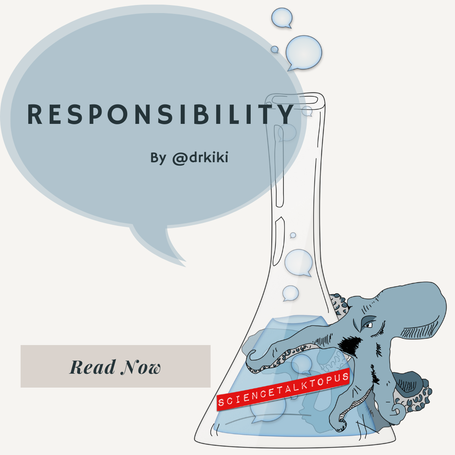This post is part of series on “The Many Arms of SciComm” which will introduce concepts and ideas leading up to Science Talk ’22. Registration is open until March 16th.

In my mind, the quote above doesn’t just apply to the public health system. As science communicators, it is our responsibility to translate & communicate scientific findings in such a way that “Science” (with a capital S) inspires confidence among anyone who could potentially be impacted by them. Reaching out to those with differing perspectives with the goal of understanding is essential to truly earning trust, especially among those who have been historically ignored or harmed. Climate, environment, health, technology… all the places where science intersects with society require attention from the science communication community.
As much as the myth of the brilliant, isolated scientist toiling away in his laboratory continues to persist in the stories we tell, it is far from reality. Science does not take place in isolation, but is woven into the fabric of society. That science is inspired by societal interactions and also impacts society’s future are primary reasons for people involved in science to communicate responsibly.
The idea of responsibility in scientific practice has existed for many years. We have regulatory groups, lab notebooks, and binders of standard operating procedures to ensure that research is safe and ethical. But, what about the communication of science? Who is responsible for the words used to explain a project, concept, or finding and how they may or may not be interpreted by different audiences?
Science as a professional field that helps to advance society holds significant public trust, but at the same time it has a branding problem. Unlike a large corporation with a marketing department and advertising professionals on speed-dial, no one in particular is in charge of telling the story of science. This means that the story can seem incoherent, impenetrable, and even render many characters invisible.
Thankfully, the science communication landscape has developed significantly in the past several decades. Scientists realize their role in not only exercising responsibility in research, but also its communication. Science communication training programs for scientists are increasing in number across the country as institutions and departments address the need for scientists to be versed in communications tactics. There is more discourse than ever between scientists, journalists, and other communicators – who are essential parts of the storytelling ecosystem. Additionally, scientists are reaching out to policymakers to help inform policy with evidence.
Scientists are coming to understand that their social contract goes beyond the lab bench. They must learn to be responsible custodians of the information they uncover and the knowledge they choose to share. Not only do they have to contend with the media misreporting their findings, but now the virality of sensational headlines and hot-takes on social media makes every word choice matter.
Increasingly, scientists are acting as their own marketing team, heading to social media platforms like Twitter to report their findings or to debate with other scientists. #ScienceTwitter is incredibly vibrant and active, but it is not a private community. Unless an account is private, all its posts are visible to anyone else on Twitter. This transparency is a double-edged sword – while it allows scientists direct access to people, it also influences the spread of misinformation through both misunderstanding and purposeful misuse.
Indeed, in a world of identity politics where anything can be politicized, professional science communicators can be an incredible asset, and considered at least as important to implementing responsible science communication as training scientists themselves. This current environment is crying out for science communications professionals to assist scientists and science organizations.
Realistically, how many scientists have the time or wherewithal to do all of their own communicating in the most responsible and effective way? There are some, myself included, who question the idea that all scientists even should. In a recent issue of AAAS’ Science Magazine, H. Holden Thorp wrote in an editorial that he thinks “we need to be careful with the notion that every scientist can be easily trained to also be an outstanding communicator.” And, I find myself agreeing with his conclusion that we might be better served by improving partnerships between scientists & communicators.
Working with scientists, science communicators can help incorporate responsible practices into science communication efforts from the earliest stages of a scientific research project, and provide the tools needed to frame and craft informational messaging for specific uses & goals.
How can we help? Here’s a short list of possible ways science communicators can partner with academic & organizational partners:
- Stakeholder identification & management
- Defining diversity, equity, & inclusion considerations
- Communications goal-setting & strategy
- Media trainings
- Communications timeline planning
- Tactical communications implementation
- Communications assessments
I’d love to hear your ideas for additional areas where science communicators can effectively work to truly and responsibly build trust among those who fall outside the echoing bubble of agreement. Because what is essential is that we make responsibility a cornerstone of science communication. Solidly ethical communication frameworks will lead to more societal confidence in Science without any coercion. And, it’s our responsibility as science communicators to work with scientific partners to make sure it happens.



Leave a Reply